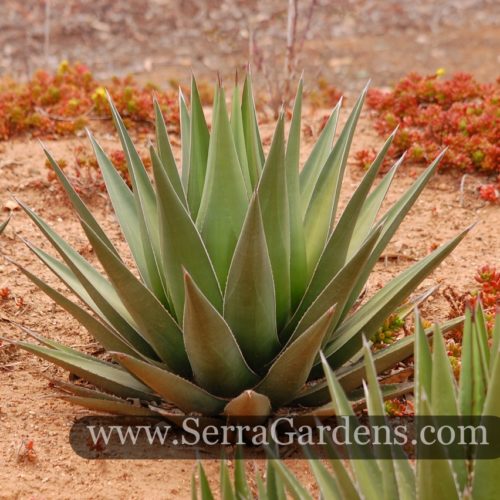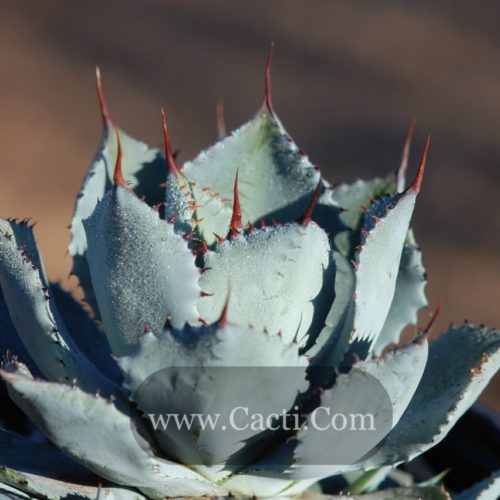Where to Find Agave Plants for Sale: Practical Tips for Healthy Choices

The first time I hunted for an agave to plant in my backyard, I was convinced it would be a simple “add to cart” mission. Fast forward two weeks, and I’m elbow-deep in packing peanuts, staring at a squished, yellowing Agave americana that looked nothing like the majestic blue-grey beasts of the Southwest. Lesson learned: where and how you buy your agave matters—a lot!
After years (and plenty of hits and misses), here’s what actually works if you want an agave that thrives instead of just surviving.
Skip the Random Gamble—Here’s How to Land a Healthy, Showstopper Agave
1. Touch Before You Buy (Whenever Possible)
Last spring, after my mail-order mishap, I swung by Walter Andersen Nursery in San Diego. The second I ran my fingers over those fleshy leaves—firm as a ripe avocado and slick with morning dew—I knew THIS was real quality. A healthy agave should feel dense (never soft), with leaves snapping back if gently pressed.
Pro tip: Garden centers like Armstrong or SummerWinds often get their shipments on Fridays—show up early for first pick!

2. Don’t Dismiss Big-Box Stores, But Be Picky
I used to avoid Home Depot like the plague for rare plants—until I stumbled across an entire table of robust Agave attenuata during one unplanned hardware run. Yes, sometimes you find gems! Flip over leaves: if there’s any sign of brown rot or weird white scale insects dotting the base, skip it.
Remarkably, even Lowe’s managers have cut me deals for lightly scuffed pots ($30 off for a slightly lopsided ‘Blue Glow’!). Don’t be afraid to haggle a bit, especially late Sunday afternoons.
3. Go Online? Only If You Vet Like a Detective
The online world is both goldmine and minefield. After that original disaster plant from an anonymous Amazon seller, I never order unless these boxes are ticked:
- Clear photos of the actual plant, not just stock images.
- Root info: Is it shipped bare-root or potted? Bare-root is fine but means it’ll arrive dusty; wrap it in newspaper yourself before potting!
- Shipping guarantee: Annie’s Annuals has replaced two broken plants for me with zero hassle.
- Customer-uploaded arrival pics in reviews—can’t stress this enough.
Mountain Crest Gardens rarely disappoints—they triple-wrap roots and send care tips taped inside every box. Etsy can be thrilling too; look up shops with over 200 reviews and actual customer photos (search “Agave victoriae-reginae,” then filter by “Top Rated Seller”).
4. Try Plant Swaps & Clubs – For Real Conversation AND Bargains
I struck trade gold during the Arizona Cactus & Succulent Society’s spring sale: $5 for offsets of Agave parryi (retails online for $40+). Plus instant access to local wisdom: when someone said “Don’t water after December until night temps top 45°F,” my success rate practically doubled.

If there’s one thing society folks love more than collecting rare forms—it’s sharing their knowledge.
Choosing Your “Just Right” Agave – No Guesswork Required
Size matters—and not just when planning epic front yards!
- My compact A. parryi ‘JC Raulston’ nestles perfectly into 16-inch terracotta bowls.
- Giant A. americana will swallow small beds whole if left unchecked.
- Balcony growers: try A. potatorum ‘Kissho Kan’—tops out at about 12 inches wide but turns heads every time.
Climate makes all the difference:
- Anything below USDA zone 7? Get tough species like A. neomexicana (has survived -10°F for me near Santa Fe).
- Frost-free zones can experiment with dreamy hybrids or even tender agaves like A. gypsophila (‘Seymour Lake’ is wild!).
Sensory Test: The Punk Rock Factor
You know you’ve got something special when friends whisper "Whoa..." That crunch underfoot walking past your agave bed? Or those shadows zig-zagging across gravel at dusk? There’s nothing theoretical about this—they’re living sculpture.

Is Price Everything? Actually…No
I’ve paid $9 at swap meets and shelled out $79 plus shipping for a variegated unicorn from PlantsDelight.com—and yes, sometimes cheaper survived better! Typically:
- Offsets/small pots (4"–6"): $8–$25
- Gallon-and-up nursery plants: $25–$75+
- Mature specimens/rare cultivars: easily $100+
Ask sellers when their next restock hits—twice now I’ve scored “warehouse seconds” (cosmetic nicks only) at half price by calling during weekday afternoons.
What Can Go Wrong—and Fast Fixes
My biggest flub? Unboxing three rare agaves shipped soaking wet…all developed root rot within days because I potted them straight away rather than letting roots dry overnight as instructed by every experienced grower ever! Oops.
Simple fixes:
- When shipped bare-root, wait overnight before potting.
- If leaves arrive wrinkled—not floppy—it should perk up after first watering post-potting.
- Soft or mushy bases = toss it out; no heroics will save rot once embedded.

Actual Growth Results—What to Expect
Two years ago I planted three Agave ovatifolia (“Whale’s Tongue”) in gritty cactus mix bordered by decomposed granite mulch on a south-facing slope in SoCal:
- Each started at just under 8 inches wide,
- By this spring? All topped 24 inches—a growth rate faster than any coddled houseplant!
All told they cost me less than two weekly coffee runs each.
No exaggeration: once settled in sun they need probably less water than your neighbor’s mailbox post gets from errant sprinklers.
Starter Steps From Someone Who Learned It All the Hard Way
- Snap photos of available space so you don’t overbuy or get overwhelmed by scale.
- Schedule nursery runs on Thursday/Friday mornings right after new deliveries land.
- If anything feels soggy or looks suspiciously like stretched-out lettuce…move on!
- Scour local plant group Facebook pages; ask who sells homegrown offsets nearby—they pop up everywhere come April/May.
- Potting tip: Use half bagged cactus mix + half pumice/perlite; drainage is non-negotiable!
If you’re still torn about which species fits your dream scene—or worried about getting burned by dud sellers—shoot over questions or post your findings! This hobby grows best when shared…and trust me, finding “the one” delivers way more satisfaction than any trending minimalist shelf plant ever could.
Dive in—the right agave will change your landscape game forever!



